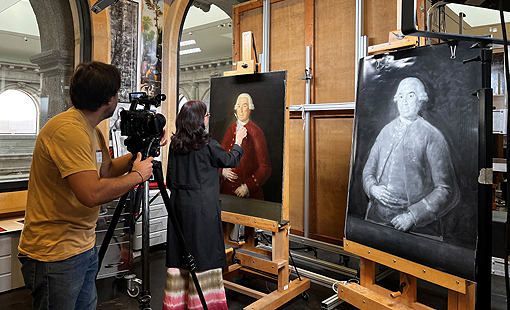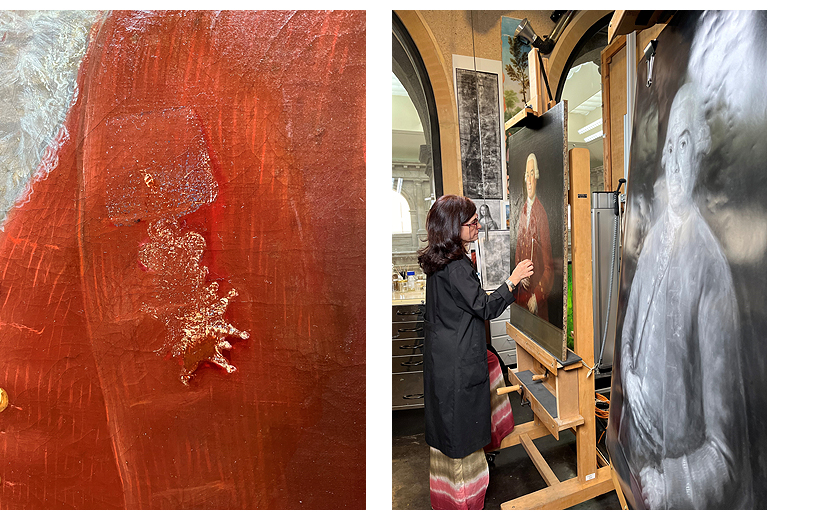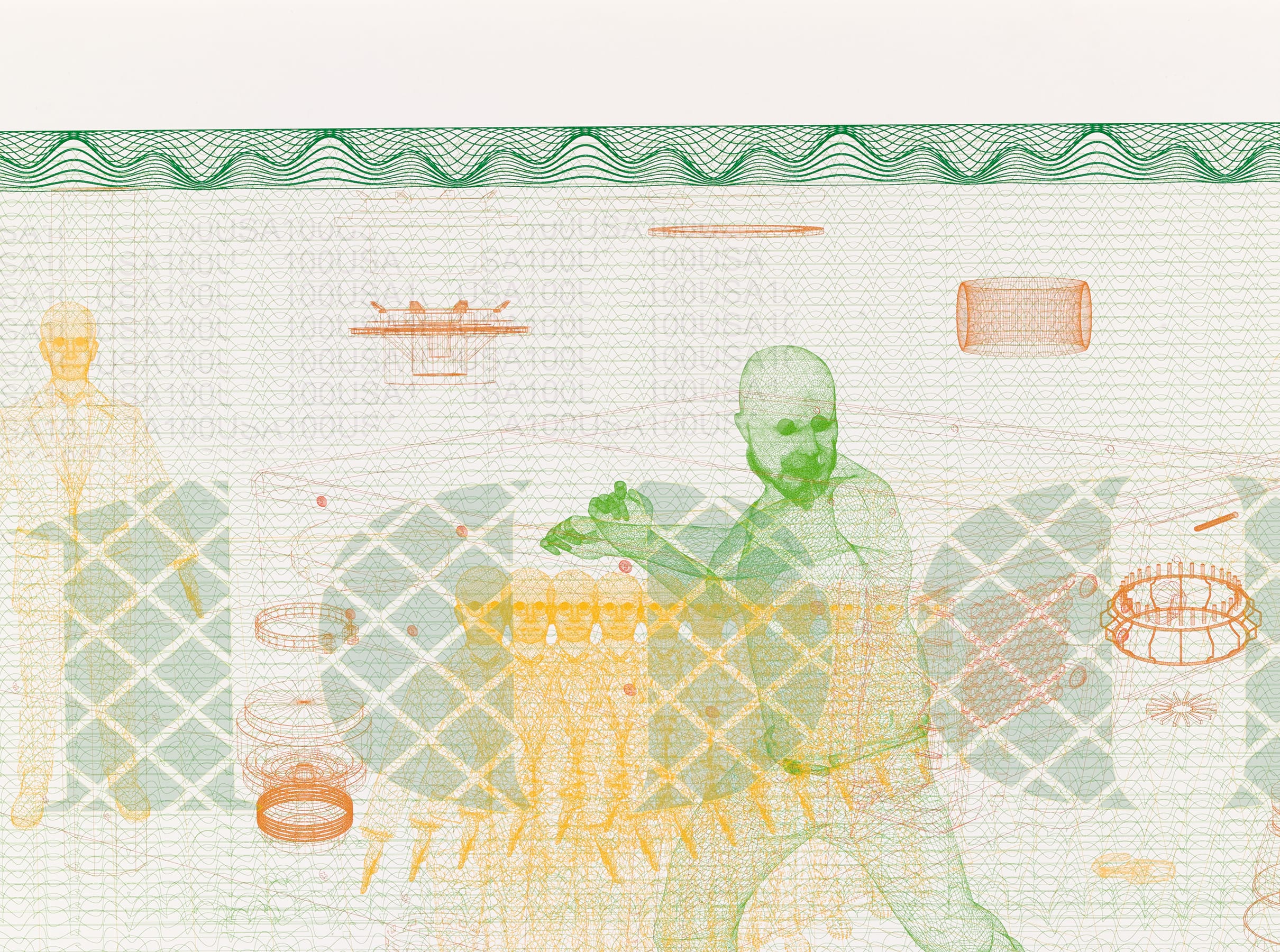
Goya painting restored under collaboration agreement between Banco de España and Museo del Prado
As part of a collaboration agreement between the Banco de España and the Museo del Prado signed in 2013, a 1785 portrait by Francisco de Goya of José de Toro-Zambrano y Ureta — a leading figure in the early years of the bank's forerunner, the Banco de San Carlos — has now been restored.
The painting forms part of the Banco de España's art collection. The restoration work has confirmed that a medal painted on the sitter's chest was added by a later painter; it has now been completely removed, thus restoring the original composition. In the video below, Gudrun Maurer and Almudena Sánchez, the experts from the Museo del Prado![]() who conducted the research and restoration, explain the process. Yolanda Romero, the Banco de España's conservator explains the genesis of the portrait and discusses the importance of Goya in the gestation of the bank's collection.
who conducted the research and restoration, explain the process. Yolanda Romero, the Banco de España's conservator explains the genesis of the portrait and discusses the importance of Goya in the gestation of the bank's collection.
The portrait of José de Toro Zambrano y Ureta
José de Toro Zambrano y Ureta was one of the first directors of the Banco de San Carlos. His was the first of six official portraits painted by Goya for the bank between 1784 and 1788. The Board of Governors of the Banco de San Carlos decided to commission portraits of its directors upon their retirement, 'to decorate the board rooms and preserve the memory of their good service'. The directors were allowed to choose the artist they wanted to paint their portraits. Toro Zambrano is believed to have chosen Goya on the recommendation of Ceán Bermúdez, the Bank's secretary.
In his portrait of Zambrano, Goya was inspired by his sitter's simplicity, clarity, precision and scholarship. This approach to portraiture had been pioneered in Spain by Anton Raphael Mengs almost twenty years earlier. However, the austerity of style in no way hindered Goya from creating a new and magnificent work of art. He skilfully captures Zambrano's outer appearance, the colour of his complexion, his refined, elegant hands and the dark hue of his frock coat. At the same time, he manages to capture his sitter’s steely blue eyes, which gaze back at us in detached judgement, the tense, dry set of his mouth and his firm fist on the parapet, an indication that this was a man who was accustomed to imposing his will.
Some months after the portrait was completed, Toro Zambrano was awarded the Grand Cross of the Order of Charles III, and the decoration was painted in at a later date by an unknown hand. The addition did not respect either the quality or the composition of Goya's work, and it was removed at the beginning of the twentieth century on the orders of Federico Amutio y Amil, the Prado's first restorer. The team from the gallery have now confirmed that Goya did not paint the medal Goya and have removed all traces of the earlier intervention, restoring the work to its original state.
 Restoration of the portrait of José de Toro Zambrano (1785) by Francisco de Goya.
Restoration of the portrait of José de Toro Zambrano (1785) by Francisco de Goya.
The collaboration agreement between the Banco de España and the Museo del Prado
The agreement between the Banco de España and the Museo del Prado provides for joint activities and collaboration on cultural projects, with particular emphasis on scientific advice, study, training and improvement in aspects related to the bank's collection.
The agreement also provides for the restoration of two works from the collection each year. Since the agreement was signed in 2013, sixteen restoration projects have been undertaken. The two most recent, completed in 2024, were the portrait of José de Toro-Zambrano y Ureta (Francisco de Goya, 1785), and Voltaire Telling A Story (Joaquín Sorolla), 1905).
The Banco de España has signed a similar collaboration agreement with the Museo Nacional Centro de Arte Reina Sofía![]() .
.
